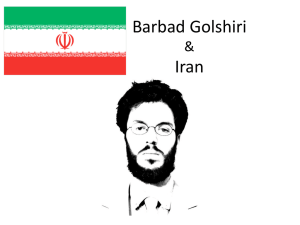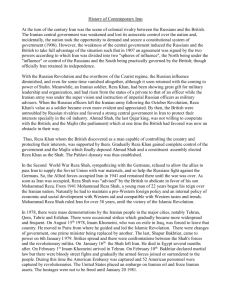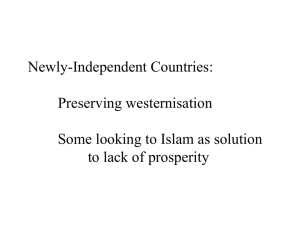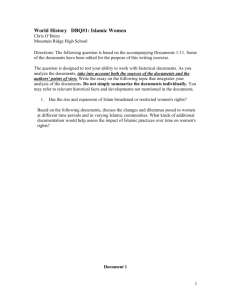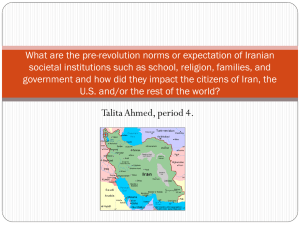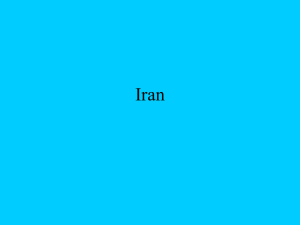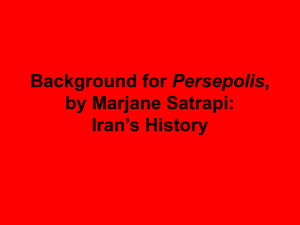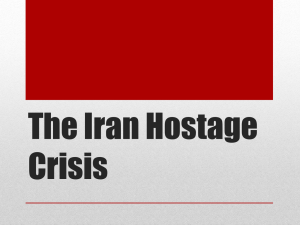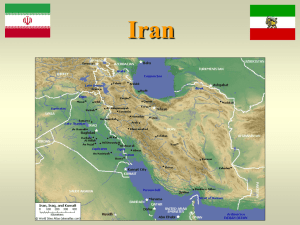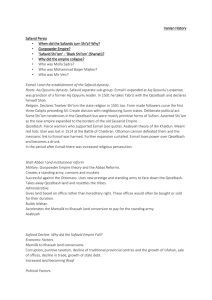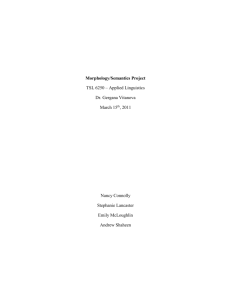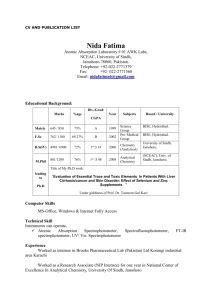here
advertisement
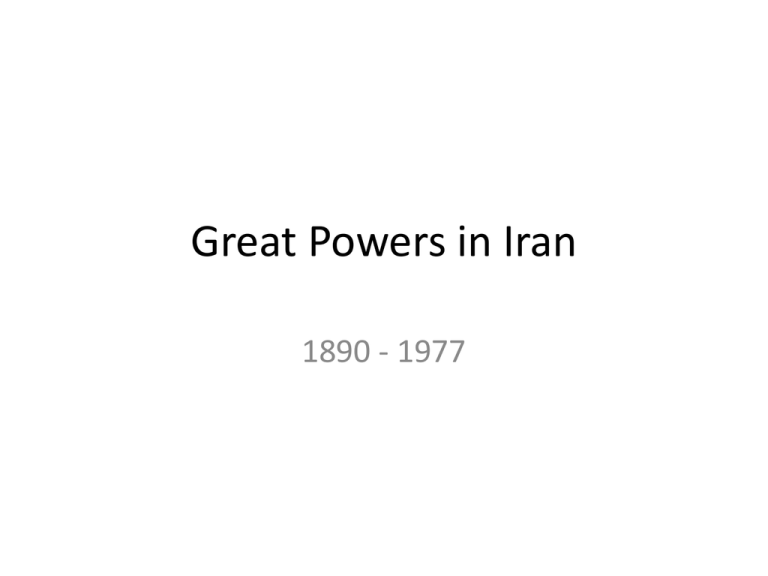
Great Powers in Iran 1890 - 1977 Tobacco Rebellion A. 1890: Tobacco concession to British B. Shiraz protests, 1891 ‒ Led by Hajj Shirazi (cleric) and Seyyed Jamal adDin “al-Afghani” C. 1892: concession cancelled D. Aftermath: Russia gained, UK lost influence E. Russian loans – 1900-1902: Qajar minister Amin as-Soltan meets with Russians to procure loans Constitutional Revolution A. Russian defeat in Ruso-Japanese War 1905 – Russians unable to lend money to Qajars B. A constitution (mashruteh) and a parliament (Majlis) C. New shah, Mohammad al Shah, 1907 Anglo-Russian Entente A. Signed in 1907 without involving Iran in negotiations B. Dividing Iran up into three pieces Anglo-Russian Entente, 1907 D’Arcy Concession A. British granted oil concession, 1901 B. Discovery of oil at Masjed Suleiman, 1908 C. Anglo-Persian Oil Company (APOC) Masjed Suleiman William Knox D’Arcy World War I A. German role: Wassmuss the “German Lawrence” B. British “secret” deals with Russia C. Sir Percy Sykes and the South Persia Rifles, 1916-1917 D. End of the War, 1919 Anglo-Persian Treaty Iran’s “Roaring” Twenties A. Soviet influence – Kuchek Khan and the Bolsheviks – A Persian Soviet Socialist Republic? B. Enter the USA, 1920 – Qajars need a new loan – Standard Oil in the North C. Reza Khan – British-supported (General Ironside) rise of Reza Khan in the Cossack Brigades – Reform: Seyyed Zia and Reza Khan annul the Anglo-Persian Treaty – 26 Feb 1921: the Russo-Iranian Treaty D. US and UK response – Millspaugh Mission Pahlavi Iran A. 1925: Reza Khan formally becomes Shah – Qajars ousted B. “Modernization from above” C. APOC concession annulled 1932 D. UK pressure for a new contract – 1933 new concession World War II A. B. C. D. E. F. G. Sour relations with British over APOC An alliance with Germany? 1941 British-Soviet Invasion Reza Shah abdicates 1942 Tripartite Treaty Second Millspaugh Mission 1944 Majlis outlaws foreign oil concessions Anglo-Soviet Invasion of Iran “The Persian Corridor” Post-WWII A. First crisis of Cold War – Soviet troops remain in Azerbaijan Province B. The end of Soviet influence – Truman pressures the Soviets – Ahmad Qavam’s empty promise – 1946 Soviet agreement – Soviets leave Iran in May 1946 Mossadeq & Nationalization A. The National Front B. Gen. Ali Razmara becomes Prime Minister – Assassinated 17 Mar 1951 C. Majlis votes Mossadeq as new PM – 29 Apr 1951 D. Nationalization of AIOC E. Worldwide boycott of Iran After the Nationalization A. Shah replaces Mossadeq with Qavam B. Mossadeq returns – Declares “state of emergency” Mossadeq returns After the Nationalization A. Shah replaces Mossadeq with Qavam B. Mossadeq returns – Declares “state of emergency” C. Operation AJAX – 28 Mordad / August 19, 1953 D. Mohammad Reza Shah regains power Mohammad Reza Shah A. Ending the Oil Crisis – 1954 Oil Consortium B. Reforms and modernization – Creation of security forces: SAVAK C. The White Revolution – Khomeini: “White Revolution is a serious threat to Islam” – Exiled 1964 “Policeman of the Gulf” A. Image of a “strongman” B. Nixon Doctrine and the “Twin Pillars” – “Unlimited” quantities of nonnuclear weapons – IBEX and the surveillance of the Soviet Union – Fighting communism in the Persian Gulf C. The Shah’s OPEC speech – OPEC as a price-setter – 1974 Petroleum Law


